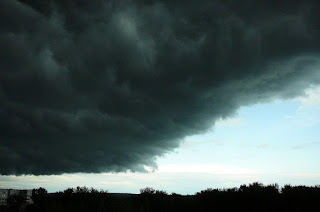 If you start reading these lines , it is best for you that God will praise you live in this time, not in the Middle Ages, specifically in the year 536 AD, where the historian Professor at the University of "Harvard" Michael McCormick, pointed out that it is the first candidate for the title of " Worst year in recorded history "as a whole.
If you start reading these lines , it is best for you that God will praise you live in this time, not in the Middle Ages, specifically in the year 536 AD, where the historian Professor at the University of "Harvard" Michael McCormick, pointed out that it is the first candidate for the title of " Worst year in recorded history "as a whole.
536 .. The darkness of the world is
536 CE is a "leap year" began on Tuesday, in the early Middle Ages, according to historians, and know what happened through the words of the Bishop of Metelin, who said in his book: "The sun began to darken day, And the oceans were raging, and the winter was cold, the birds died, and the tribulations were brought down by the pervasive evil. "
At the beginning of the year, the Middle East, Europe and some parts of Asia faced months of full "darkness" due to foggy fog, which stretched for 18 months, causing snowfall in China, continent-wide crop destruction, severe drought, famine and disease in most of half The northern globe, according to the newspaper "Daily Mail" British.
Disasters continue
It was not only darkness and winter that caused this year's naming, but the successive disasters that struck mankind one by one changed the course of history, including the intensification of the Plague called the "Justinian plague" and the killing of the inhabitants of the Eastern Roman Empire, So Eastern Europe and the Middle East almost.
The archaeologist and historian of the Middle Ages, Professor McCormick, told Science Science that he did not think the world had recovered from these disasters until 640, more than 100 years later.
"It was the beginning of one of the worst periods on Earth, if not the worst."
Then the Wai Dynasty collapsed,
The source of black clouds
The temperature in the summer of 536 fell to between 1.5 ° C and 2.5 ° C, making it the coldest period in the past 2300 years. McCormick points out that the darkness of the atmosphere throughout the middle of the sixth century was the cause of the name " Dark "on this age.
 The source of the dark clouds was a mystery, but scientists at the University of Maine's Climate Change Institute found that a catastrophic volcanic eruption in Iceland caused its ashes to erupt when it erupted in 536, and then there were two huge explosions in 540 and 547 meters.
The source of the dark clouds was a mystery, but scientists at the University of Maine's Climate Change Institute found that a catastrophic volcanic eruption in Iceland caused its ashes to erupt when it erupted in 536, and then there were two huge explosions in 540 and 547 meters.
The repeated strikes, followed by the plague, plunged Europe into the economic recession that lasted until 640. It is believed that volcanic activity produced millions of tons of ash scattered in vast areas of the world.